Custom web applications are tailored software solutions created especially for a given organization or industry’s requirements. These programs are created to meet particular needs, streamline procedures, and boost productivity. Custom web applications can significantly increase restaurant operational effectiveness, client satisfaction, and overall business growth.
Custom web applications offer numerous benefits to restaurants. They improve operational efficiency by automating processes, enhance customer satisfaction through personalized experiences, and contribute to overall business growth by providing valuable insights and expanding the customer reach. By investing in custom web applications, restaurants can optimize their operations, foster customer loyalty, and drive long-term success.
Benefits of Custom Web Applications for Restaurants
Adopting custom web applications for restaurants offers several advantages that can greatly benefit the business. Let’s delve into these advantages
:max_bytes(150000):strip_icc()/Reservations_MicroStockHub-73b05c9031e1413680abf3a5069e76c6.jpg)
1. Personalized Solutions
Custom web applications are tailored specifically to meet the unique needs of a restaurant. They can be designed to cater to specific requirements such as online ordering, reservation management, menu customization, dietary preferences, and loyalty programs. By providing personalized solutions, restaurants can offer a more engaging and relevant experience to their customers, resulting in higher satisfaction and loyalty.
2. Streamlined Operations
Custom web applications streamline various operational processes within a restaurant. They can automate tasks like order management, inventory tracking, staff scheduling, and reporting. By automating these processes, restaurants can significantly reduce manual errors, save time, and allocate their resources more efficiently. This, in turn, leads to smoother operations and improved productivity.
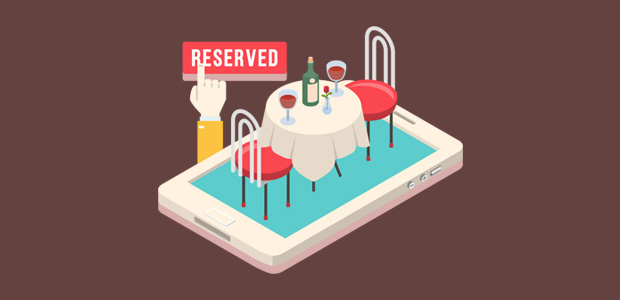

3. Enhanced Customer Experience
Custom web applications empower restaurants to provide a seamless and convenient experience to their customers. With features like online ordering, table reservations, digital menus, and payment gateways, customers can easily interact with the restaurant, place orders, and make payments at their convenience. This level of convenience enhances customer satisfaction and fosters positive relationships with the restaurant.
4. Competitive Edge
In today’s digital age, having a competitive edge is crucial for restaurants. Custom web applications allow restaurants to differentiate themselves from their competitors by offering unique features and functionalities. For example, integrating loyalty programs, personalized recommendations, and online feedback systems can help restaurants stand out and attract more customers. By embracing technology and providing an exceptional digital experience, restaurants gain a competitive edge in the market.

5. Data-driven Decision Making
Custom web applications enable restaurants to collect and analyze valuable data about their customers, sales, and operations. This data can provide insights into customer preferences, purchasing patterns, popular menu items, and peak hours. By leveraging this data, restaurants can make data-driven decisions, refine their menu offerings, optimize pricing strategies, and implement targeted marketing campaigns. This data-driven approach helps restaurants stay ahead of market trends and make informed business decisions.
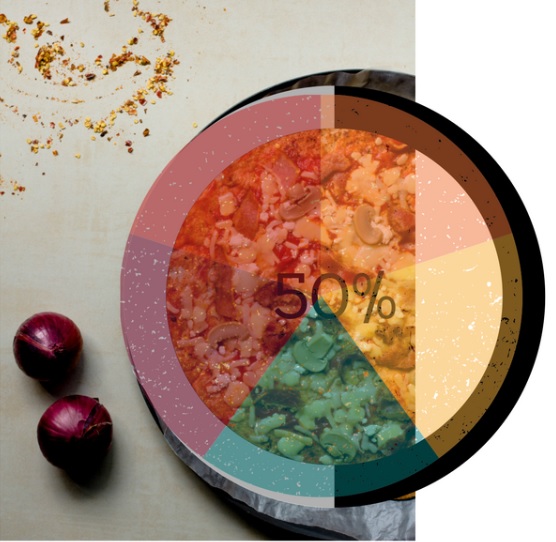
Tailored Solutions for Specific Needs
Custom web applications are designed specifically to cater to the unique requirements of restaurants by developing features and functionalities that address specific challenges faced by the industry. Let’s explore how these applications cater to the distinct needs of restaurants
1. Online Ordering
Custom web applications can include a robust online ordering system that enables customers to browse the menu, select items, customize their orders (e.g., choosing toppings, specifying dietary preferences), and make secure online payments. Restaurants can tailor the ordering process to align with their menu structure, pricing, and availability. This feature allows restaurants to seamlessly accept and manage online orders, improving convenience for customers and increasing order volume.
2. Reservations and Table Management
Custom web applications can incorporate reservation management systems that allow customers to book tables online. Restaurants can customize features such as table availability, seating capacity, and time slots based on their unique requirements. The application can also facilitate efficient table management, enabling staff to track reservations, allocate tables, and optimize seating arrangements. This feature streamlines the reservation process and ensures efficient table turnover.
3. Menu Customization
Restaurants often have diverse menus with options for customization. Custom web applications can accommodate this by allowing customers to personalize their orders. For instance, customers can select ingredients, choose portion sizes, and request special instructions. The application can be tailored to reflect these customization options accurately, ensuring that customers can order meals according to their preferences and dietary needs.
4. Delivery Management:
Restaurants should be able to quickly change their menus, add or remove products, and simply handle descriptions and prices. A system that manages the content and enables real-time management of online menus can be utilized by restaurant operators to achieve this goal. As such content management systems (CMS) are a good option. Customers are kept current by being informed about newly added items thanks to this.
5. Loyalty Programs and Promotions
Custom web applications can facilitate the implementation of loyalty programs and promotional offers tailored to a restaurant’s specific needs. These applications can track customer activity, reward points for purchases, and provide personalized offers based on customer preferences. Restaurants can customize loyalty program structures, offer targeted promotions, and incentivize customer engagement, fostering loyalty and repeat business.
By developing custom web applications, restaurants can address their unique challenges and requirements effectively. The ability to tailor features and functionalities such as online ordering, reservations, menu customization, and delivery management ensures that the application aligns perfectly with the restaurant’s operations. Custom web applications provide restaurants with the flexibility to adapt and optimize their processes, enhancing customer satisfaction and contributing to the overall success of the business.
Streamlined Operations and Efficiency
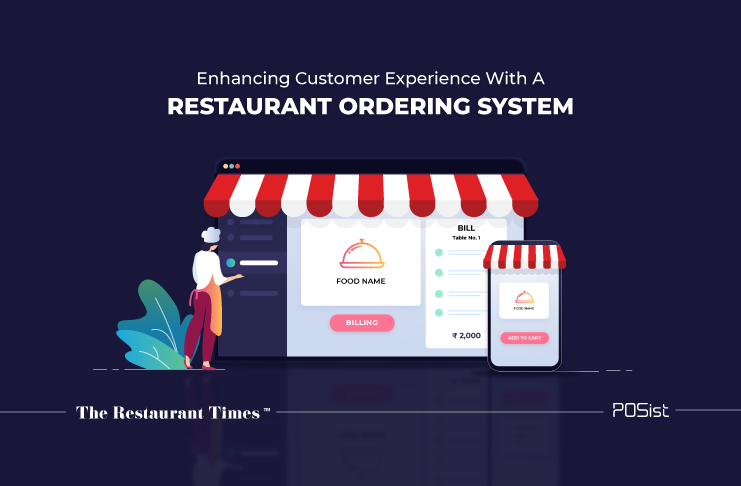
Custom web applications play a vital role in optimizing restaurant operations by introducing various features that enhance efficiency and reduce manual errors. Let’s explore how these features contribute to operational optimization

Automated Order Management
Custom web applications streamline the order management process by automating tasks such as order placement, processing, and tracking. When customers place orders through the application, it seamlessly integrates with the restaurant’s backend systems, automatically notifying the kitchen staff and initiating the preparation process. This automation reduces the reliance on manual order taking and minimizes the chances of errors or miscommunications.

Inventory Control
Custom web applications can incorporate inventory management functionalities, allowing restaurants to track and control their stock levels in real time. The application can monitor ingredient quantities, track usage patterns, and send alerts when items are running low. By having accurate inventory data, restaurants can optimize their purchasing decisions, avoid stockouts or overstocking, and ensure efficient utilization of ingredients, ultimately reducing wastage and improving cost-effectiveness.

Staff Scheduling
Custom web applications can assist in optimizing staff scheduling by providing tools for efficient shift management. Restaurants can customize the application to align with their specific scheduling requirements, taking into account factors such as peak hours, employee availability, and skill sets. By automating the scheduling process, the application can help minimize staffing gaps, optimize labor costs, and ensure adequate coverage during busy periods.
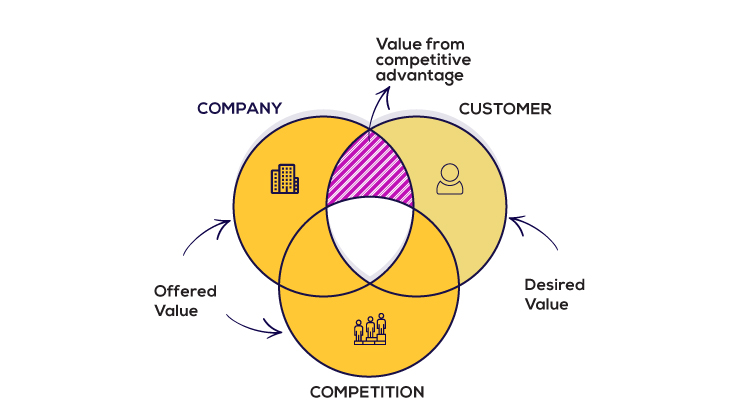
Real-time Communication
Custom web applications can enable real-time communication and collaboration among restaurant staff members. Features such as in-app messaging or notifications can facilitate seamless communication between front-of-house and back-of-house teams, ensuring that information flows smoothly. Real-time communication minimizes delays, enhances coordination, and improves overall efficiency in delivering excellent customer service.
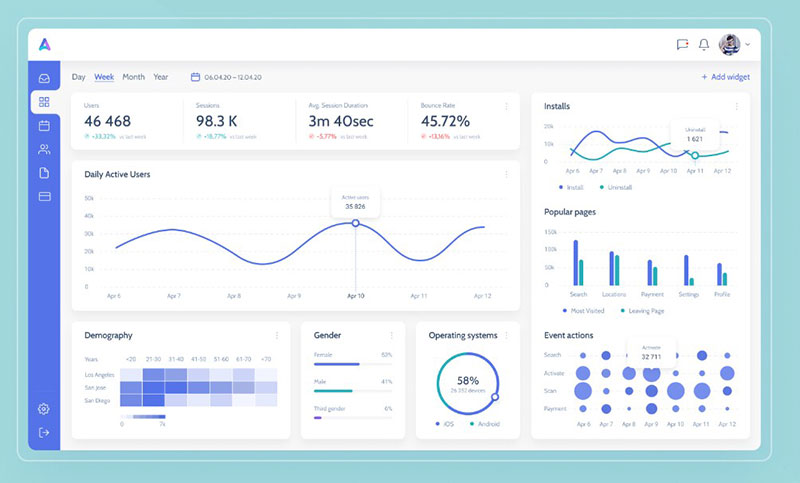
Analytics and Reporting
Custom web applications often include analytics and reporting capabilities that provide valuable insights into restaurant operations. These applications can generate reports on key performance indicators (KPIs) such as sales trends, order volumes, customer feedback, and employee performance. By analyzing this data, restaurant owners and managers can identify areas for improvement, make data-driven decisions, and implement strategies to enhance operational efficiency.
Online Ordering and Delivery Management
Online ordering and delivery management features in custom web applications are of significant importance for restaurants. These features streamline the ordering process, track deliveries, and provide real-time updates to customers, which results in improved efficiency and good customer experience. Let’s delve into their importance

-
- Streamlined Ordering Process: Online ordering features in custom web applications allow customers to conveniently browse menus, customize their orders, and make payments online. Restaurants may streamline the ordering process and cut down on the time and effort needed from consumers by offering a user-friendly and simple interface. This convenience encourages more customers to order online, leading to increased sales and customer satisfaction.
-
- Increased Efficiency: Custom web applications with online ordering features eliminate the need for manual order taking and phone calls, reducing the chances of miscommunication or errors. Orders are directly received and processed through the application, ensuring accuracy and efficiency. This streamlines the workflow in the kitchen, minimizing delays and enabling faster order fulfillment. Restaurants are able to manage more orders, service more customers, and operate more effectively as a result.
-
- Delivery Tracking: Delivery management features in custom web applications enable customers to track the progress of their deliveries in real time. They are able to get information on the status of their orders, expected delivery dates, and even the driver’s location. This transparency builds trust and provides customers with a sense of control over their orders. Additionally, delivery tracking reduces customer inquiries and support calls, as they can easily access the information they need through the application.
- Real-time Updates: Custom web applications with delivery management features allow restaurants to send real-time updates to customers regarding their orders. This includes notifications when the order is received, confirmed, out for delivery, or delivered. Real-time updates keep customers informed and engaged throughout the delivery process, enhancing their overall experience. Moreover, in the case of any unexpected delays or changes, restaurants can promptly communicate updates to customers, ensuring transparency and managing expectations effectively.
Table Reservation and Waitlist Management
Incorporating table reservation and waitlist management functionalities in custom web applications offers several benefits for restaurants. Customers can use these features to view anticipated wait times, make bookings online, and get notifications when their table is ready. Let’s explore the benefits of these functionalities
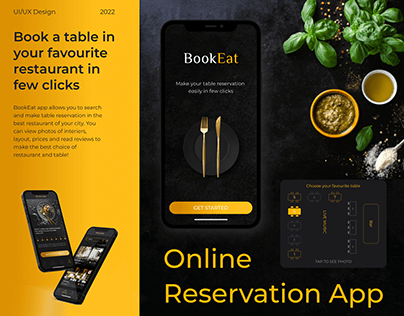
-
- Improved Customer Experience: Table reservation and waitlist management functionalities enhance the overall customer experience by providing convenience and reducing wait times. Through the restaurant’s website or app, patrons may book reservations with ease, doing away with the necessity for phone calls or in-person visits. This simplifies the process for customers and allows them to secure a table at their preferred time, ensuring a smooth and enjoyable dining experience.
- Efficient Table Utilization: By incorporating table reservation and waitlist management functionalities, restaurants can optimize their table utilization. The application allows for efficient planning and allocation of available tables, ensuring that tables are occupied and utilized effectively. This results in reduced wait times for customers and maximizes the revenue potential of the restaurant.
- Real-time Wait Time Updates: Custom web applications with waitlist management features provide customers with real-time information about wait times. Customers can plan their visit properly by viewing the anticipated wait time before to visiting the restaurant. This transparency helps manage customer expectations and minimizes frustration caused by long wait times. It also enables customers to make informed decisions about whether to wait or explore other dining options.
- Notifications and Alerts: Once a customer is added to the waitlist, custom web applications can send notifications or alerts to keep them informed about their table status. When their table is ready, customers can receive information via email, SMS, or push notifications. This feature allows customers the flexibility to explore nearby areas or wait comfortably, knowing they will be notified promptly when their table becomes available.
- Efficient Table Turnover: Table reservation and waitlist management functionalities promote efficient table turnover, benefitting both customers and the restaurant. By accurately estimating wait times and managing reservations, restaurants can ensure a smooth flow of guests and minimize idle tables. This enables the restaurant to accommodate more guests and optimize revenue while maintaining a high level of customer service.
Menu Customization and Special Requests
Menu customization and accommodating special requests through custom web applications hold significant importance for restaurants. These features allow customers to personalize their orders, specify dietary preferences, and make special requests, providing a tailored dining experience. Let’s explore the significance of these functionalities

-
- Personalized Dining Experience: Menu customization features in custom web applications empower customers to personalize their orders according to their preferences. Customers can modify ingredients, portion sizes, and add or remove specific items to create a meal that suits their taste. This degree of personalization improves the dining experience, strengthening patrons’ bonds with the eatery and raising their level of happiness.
-
- Catering to Dietary Preferences: Custom web applications can include features that cater to various dietary preferences and restrictions, such as vegetarian, vegan, gluten-free, or allergen-specific options. Customers can easily filter menu items based on their dietary needs, ensuring they can find suitable choices. This accommodation of dietary preferences not only caters to a wider customer base but also demonstrates the restaurant’s commitment to inclusivity and customer satisfaction.
-
- Special Requests: Custom web applications can facilitate customers to make special requests related to their orders. Whether it’s requesting a specific cooking style, ingredient substitution, or additional condiments, customers can communicate their preferences or special requirements through the application. This feature gives patrons more control over their dining experience and guarantees that their wants are addressed, which raises patron happiness.
-
- Increased Efficiency and Accuracy: By integrating menu customization and special request features into custom web applications, restaurants can streamline the ordering process and improve order accuracy. Customers can clearly specify their preferences and requests through the application, reducing the chances of miscommunication or errors that may occur during traditional order-taking methods. This increased efficiency and accuracy minimize the need for follow-up inquiries and enhance the overall operational effectiveness of the restaurant.
- Loyalty and Repeat Business: Accommodating menu customization and special requests through custom web applications can help foster customer loyalty and encourage repeat business. Customers are more inclined to frequent a restaurant when they believe that their preferences and wishes are recognized and met. This level of personalized service creates a positive impression and builds a strong rapport with customers, ultimately leading to increased customer loyalty and advocacy.
Integration with Payment Gateways
Integrating custom web applications with secure payment gateways is of utmost importance for restaurants. This integration enables seamless and secure online transactions, including accepting various payment methods and handling refunds effectively. Let’s explore the significance of this integration

- Seamless Online Transactions: By integrating custom web applications with secure payment gateways, restaurants can offer their customers a seamless and hassle-free online transaction experience. Customers can make payments directly through the application, without being redirected to external websites or platforms. This seamless process enhances convenience and reduces friction, making it easier for customers to complete their transactions.
- Secure Payment Processing: Custom web applications integrated with secure payment gateways ensure the protection of sensitive customer information during online transactions. These payment gateways employ encryption protocols and security measures to safeguard payment data, reducing the risk of data breaches or unauthorized access. This instills trust in customers, assuring them that their payment details are handled securely.
- Acceptance of Various Payment Methods: Integration with secure payment gateways allows restaurants to accept a wide range of payment methods. Users will have the convenience of choosing a variety of online payment options, including credit cards, digital wallets, debit cards, and more. By offering multiple payment options, restaurants cater to diverse customer preferences, resulting in increased customer satisfaction and a higher likelihood of completing the transaction.
- Compliance with Payment Standards: Payment gateways often adhere to industry standards and compliance regulations such as Payment Card Industry Data Security Standard (PCI DSS). Integrating custom web applications with these secure payment gateways ensures that restaurants meet the required security standards for handling payment transactions. Compliance with these standards not only protects customer data but also helps maintain the reputation of the restaurant and instills confidence in customers.
- Handling Refunds and Chargebacks: Custom web applications integrated with payment gateways simplify the process of handling refunds and managing chargebacks. In case of order cancellations or customer disputes, the payment gateway provides a mechanism for issuing refunds or resolving chargeback claims. This streamlines the refund process, reduces administrative effort, and ensures transparency and fairness in resolving payment-related issues.
Customer Relationship Management (CRM)
Custom web applications play a crucial role in facilitating effective customer relationship management (CRM) for restaurants. These applications enable the capture, storage, and utilization of customer data to provide personalized experiences, track customer preferences, and implement loyalty programs. Let’s explore how custom web applications contribute to CRM
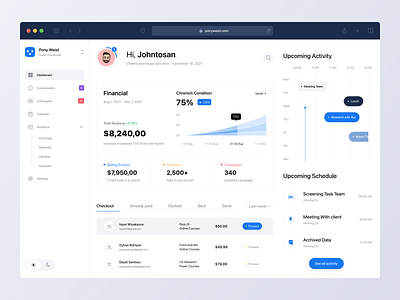
-
-
Customer Data Capture: Custom web applications allow restaurants to capture essential customer data, such as names, contact information, order history, and preferences. Through online registration or account creation, customers voluntarily provide this information, which is securely stored in a database. This data serves as a foundation for effective CRM, as it enables restaurants to understand their customers better and tailor their experiences accordingly.Person
-
Palized Experiences: By leveraging customer data, custom web applications can offer personalized experiences to customers. Restaurants can use the data to customize recommendations, suggest relevant menu items, and provide targeted promotions based on individual preferences and past orders. Personalized experiences make customers feel valued and understood, leading to increased satisfaction and loyalty.
-
Tracking Customer Preferences: Custom web applications enable the tracking of customer preferences over time. By analyzing order history and behavior patterns, restaurants can identify specific preferences, favorite items, dietary restrictions, or preferred dining times. This information helps in tailoring recommendations and offering personalized suggestions to customers, enhancing their overall dining experience.
-
Loyalty Programs: Custom web applications are an ideal platform for implementing and managing loyalty programs. By tracking customer activity and purchase history, restaurants can reward loyal customers with points, discounts, or exclusive offers. The application can provide a digital loyalty card, allowing customers to conveniently accumulate rewards and redeem them for future visits. Loyalty programs encourage repeat business and foster customer loyalty, leading to long-term relationships.
-
Communication and Feedback: Custom web applications facilitate direct communication with customers, enabling feedback collection and engagement. Restaurants can encourage customers to provide feedback, reviews, or ratings through the application. This feedback helps restaurants to understand customer preferences, address concerns, and continuously improve their services. Effective communication through the application also allows restaurants to notify customers about special events, promotions, or updates, further strengthening the customer relationship.
-
Data Analysis and Insights: Custom web applications provide restaurants with the ability to analyze customer data and derive valuable insights. By leveraging data analytics tools, restaurants can identify trends, patterns, and customer preferences on a broader scale. To better serve customers and promote corporate growth, these data might guide decision-making processes such as menu revisions, marketing plans, or operational enhancements.
-
Analytics and Insights
Analytics and insights provided by custom web applications hold immense value for restaurants. In order to support data-driven decision-making and focused marketing strategies, data analysis can provide valuable information regarding customer behaviour, preferences, and trends. Let’s explore the significance of analytics and insights in custom web applications
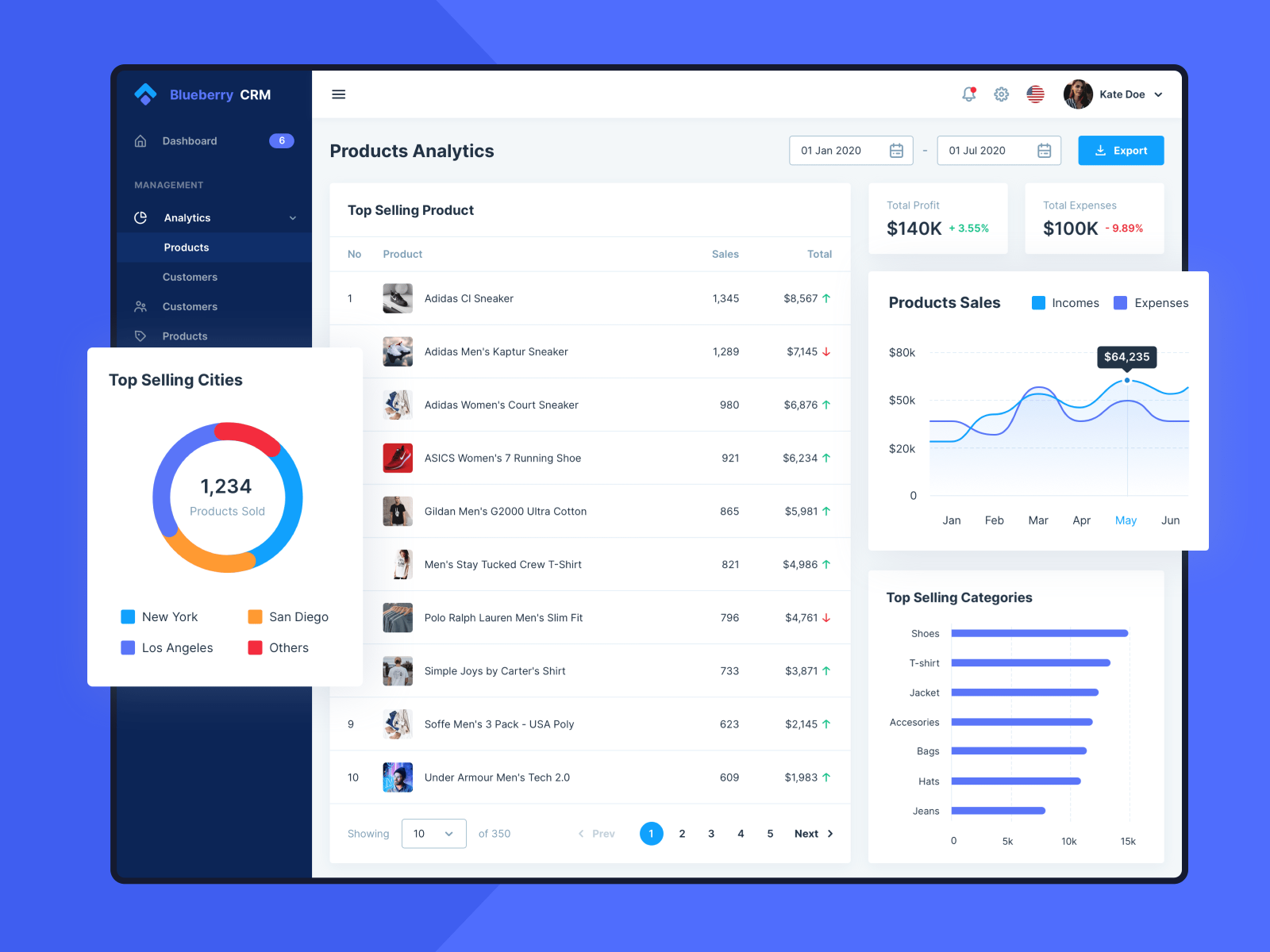
-
-
Understanding Customer Behavior: Custom web applications collect and analyze vast amounts of customer data, such as order history, browsing patterns, and engagement metrics. Through data analysis, restaurants can gain a deeper understanding of customer behavior. This includes insights into popular menu items, peak ordering times, average order value, and frequency of visits. Understanding customer behavior helps restaurants identify opportunities to improve operational efficiency, optimize menu offerings, and enhance the overall customer experience.
-
Identifying Customer Preferences: By analyzing customer data, custom web applications can identify individual and collective preferences. Restaurants can track customer choices, favorite items, and customization trends. These insights enable personalized recommendations, targeted promotions, and menu updates that align with customer preferences. Understanding customer preferences enhances customer satisfaction, drives repeat business, and supports menu optimization efforts.
-
Tracking Trends and Patterns: Data analysis allows restaurants to identify broader trends and patterns within customer behavior. Custom web applications can help track popular menu trends, seasonal preferences, or emerging dining trends. By recognizing these patterns, restaurants can adapt their offerings and stay ahead of the competition. Data-driven insights provide valuable guidance for introducing new menu items, adjusting pricing strategies, and capitalizing on emerging customer preferences.
-
Data-Driven Decision-Making: Custom web applications empower restaurants to make data-driven decisions. By analyzing customer data, restaurants can evaluate the success of promotional campaigns, measure the impact of menu changes, and assess the effectiveness of various operational strategies. Data-driven decision-making minimizes guesswork and helps restaurants allocate resources effectively, optimize operational processes, and focus on initiatives that have a higher likelihood of success.
-
Targeted Marketing Strategies: Custom web applications enable targeted marketing strategies based on customer insights. By understanding customer preferences, behaviors, and demographics, restaurants can create personalized marketing campaigns. This includes sending tailored offers, promotions, or recommendations to specific customer segments. Targeted marketing strategies improve engagement, increase the effectiveness of marketing efforts, and foster stronger customer relationships.
-
Continuous Improvement: Data analysis through custom web applications facilitates continuous improvement for restaurants. By regularly analyzing customer data, restaurants can identify areas for improvement, uncover potential bottlenecks, and implement operational enhancements. Insights from data analysis enable restaurants to make proactive adjustments, address customer pain points, and deliver an exceptional dining experience.
-
Scalability and Future Growth
Custom web applications are designed with future growth in mind, ensuring scalability, the ability to handle increased traffic and transactions, and flexibility to add new features and functionalities as the restaurant expands. Let’s explore these aspects
-
-
Scalability: Custom web applications are built to scale and accommodate growing demands. They are designed with scalable architectures and infrastructure that can handle increased user traffic and transaction volumes. As the restaurant expands and attracts more customers, the application can seamlessly scale up its resources, such as server capacity, bandwidth, and database capabilities. This scalability ensures optimal performance and a smooth user experience even during peak periods of high traffic.
-
Handling Increased Traffic and Transactions: As the restaurant grows, the custom web application must be capable of handling increased traffic and transactions. It should have the ability to process a larger number of simultaneous orders, reservations, and online transactions without compromising performance. This requires robust backend systems, efficient database management, and optimized code to ensure quick response times and reliability, regardless of the user load.
-
Flexibility for Adding New Features and Functionalities: Custom web applications are designed to be flexible and easily adaptable to accommodate new features and functionalities as the restaurant expands its offerings. The architecture and codebase of the application should be modular and scalable, allowing for seamless integration of new features without significant disruptions. Whether it’s implementing online delivery management, loyalty programs, or integrating with third-party services, custom web applications can be extended and customized to meet the evolving needs of the restaurant.
-
Future-Proof Technology Choices: Custom web applications leverage modern and future-proof technologies to ensure long-term viability and adaptability. By adopting scalable frameworks, cloud-based infrastructure, and industry-standard development practices, these applications can easily integrate with emerging technologies and support future enhancements. This future-proof approach minimizes the need for major redevelopments or system overhauls as the restaurant expands, saving time and resources.
-
Collaboration and Communication: Custom web applications facilitate collaboration and communication within the restaurant’s growing team. As the organization expands, the application can include features for internal communication, task management, and staff scheduling. These functionalities help streamline operations, improve efficiency, and maintain effective coordination between different departments, resulting in smoother workflows and enhanced productivity.
-
Integration with Third-Party Systems: Custom web applications can integrate with various third-party systems and APIs to support expanded operations. Integration with payment gateways, inventory control programmes, customer relationship management (CRM) software, and other systems is part of this. Seamless integration with these systems allows the restaurant to leverage existing tools and infrastructure, improving efficiency and streamlining processes.
-
Security and Data Protection
Security and data protection are of utmost importance in custom web applications. To maintain the confidentiality, integrity, and accessibility of sensitive data, these applications must put in place strong security measures. Let’s explore the key aspects of security and data protection in custom web applications

-
-
Encryption: Custom web applications employ encryption techniques to safeguard data during transmission and storage. Protocols like TLS or SSL are used to maintain security and prevent unauthorized access or interception by encrypting the data during transmission. Additionally, to prevent unauthorized access in the event of a breach, sensitive data kept in databases is frequently encrypted.
-
Secure Data Storage: Custom web applications prioritize secure data storage practices. This involves implementing access controls, using secure database systems, and regularly applying security patches and updates. Sensitive client information, such as personal information, payment information, or order history, is safeguarded against unauthorized access, data leaks, or data breaches thanks to secure data storage.
-
User Authentication: Custom web applications implement user authentication mechanisms to ensure that only authorized individuals can access certain features or sensitive information. In more complex situations, 2FA or biometric authentication can be added for more security. Username and password authentication is commonly used for this. User authentication prevents unauthorized access to customer accounts and restricts access to sensitive functionalities.
-
Compliance with Data Protection Regulations: Custom web applications adhere to data protection regulations and privacy laws. This involves adhering to laws like the CCPA and the GDPR. Compliance involves obtaining user consent for data collection and processing, providing transparency regarding data usage and storage practices, and offering options for users to manage their data privacy preferences.
-
Regular Security Audits and Vulnerability Assessments: To recognize and reduce any security threats, custom web applications often undergo security audits and vulnerability assessments. This involves conducting penetration testing, code reviews, and system scans to identify vulnerabilities or weaknesses in the application. By addressing these vulnerabilities proactively, custom web applications can minimize the risk of security breaches or data compromises.
-
Ongoing Monitoring and Incident Response: Custom web applications implement continuous monitoring and incident response mechanisms to detect and respond to security threats or breaches promptly. Security monitoring tools and intrusion detection systems are utilized to monitor for suspicious activities or unauthorized access attempts. An incident response plan is implemented in the event of a security incident in order to stop the breach, lessen its effects, and make sure that the parties impacted are properly informed.
-
Customization and Branding
Custom web applications offer restaurants the ability to reflect their unique branding and aesthetics, allowing for customization of the user interface and incorporation of branding elements to maintain a consistent visual identity. Let’s look into the options available for customizing the user interface and enhancing the branding of a restaurant’s web application
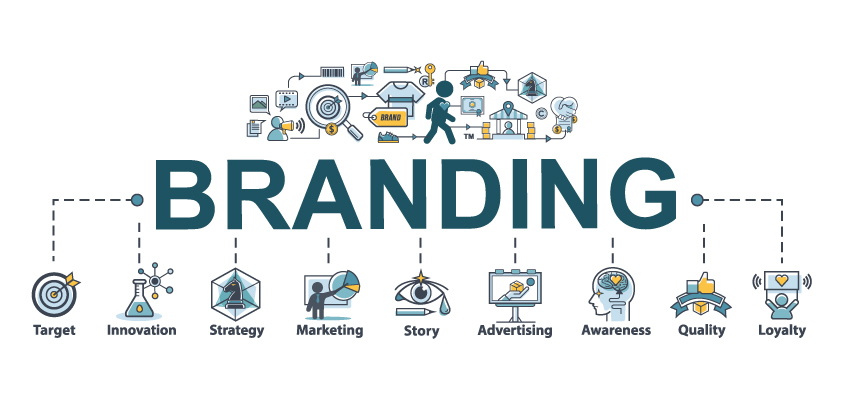
-
-
Customized User Interface: Restaurants have the freedom to create a user experience that complements their brand’s aesthetics and values with a custom web application. The interface can be tailored to create a visually appealing and intuitive experience for customers. Customization options may include choosing color schemes, typography, layout styles, and graphical elements that reflect the restaurant’s branding and ambiance. A well-designed user interface enhances the overall user experience and reinforces the restaurant’s unique identity.
-
Branding Elements Integration: Custom web applications allow restaurants to seamlessly integrate their branding elements throughout the application. This includes incorporating the restaurant’s logo, tagline, and brand colors into various elements of the user interface, such as the website header, navigation menus, buttons, and icons. Consistent and strategic placement of branding elements helps reinforce brand recognition and fosters a sense of familiarity and trust among customers.
-
Visual Identity Consistency: Custom web applications enable restaurants to maintain a consistent visual identity across different platforms and devices. Whether accessed from a desktop computer, mobile device, or tablet, the application’s design elements and branding remain consistent. Consistency in visual identity builds brand recognition and reinforces the restaurant’s professionalism and attention to detail.
-
Responsive Design: Responsive design concepts can be used to create custom online apps, guaranteeing that the user interface will adjust naturally to various screen sizes and devices. Customers can experience the application consistently and optimally whether they visit it from a desktop computer, smartphone, or tablet thanks to the responsive design. The adaptability of the user interface helps maintain a cohesive brand experience across various platforms.
-
Enhanced Imagery and Visual Assets: Custom web applications provide the opportunity to showcase high-quality imagery and visual assets that align with the restaurant’s brand. This may include showcasing enticing food and drink images, showcasing the restaurant’s ambiance through professional photographs, or using visual elements that reflect the restaurant’s unique style. The use of visually appealing assets enhances the overall aesthetics of the application and contributes to a memorable brand experience for customers.
-
Maintenance and Support
Ongoing maintenance and support for custom web applications are crucial to ensure their smooth functioning, address any issues promptly, and keep them up to date. Let’s discuss the importance of ongoing maintenance and support for custom web applications

-
-
Regular Updates: Custom web applications require regular updates to keep up with evolving technologies, security standards, and user expectations. Updates to software may come with bug patches, performance improvements, and the addition of new features. By staying up to date, the application can maintain optimal performance, security, and compatibility with various devices and browsers.
-
Bug Fixes and Issue Resolution: Despite thorough testing during development, bugs and issues may still arise in custom web applications. Ongoing maintenance and support provide the necessary framework to identify and address these bugs promptly. Assuring that any problems are quickly fixed by routine monitoring, debugging, and troubleshooting helps to maintain the functionality and user experience of the application.
-
Security Enhancements: Cyber threats and vulnerabilities are constantly evolving, making it essential to prioritize security in custom web applications. Ongoing maintenance and support involve implementing security patches, updates, and vulnerability assessments to safeguard the application against potential breaches. Regular security audits and proactive measures help identify and address vulnerabilities, ensuring the application remains secure and protected.
-
Performance Optimization: Custom web applications may experience performance degradation over time due to various factors such as increased data volume, user traffic, or changes in the technology landscape. Ongoing maintenance and support involve performance monitoring, optimization, and tuning to ensure that the application operates efficiently and delivers a seamless user experience. This includes optimizing database queries, improving server response times, and addressing any bottlenecks that may impact performance.
-
Technical Assistance and User Support: Ongoing maintenance and support provide technical assistance and user support to address any user inquiries, issues, or challenges. This may include providing a help desk or ticketing system, offering documentation and tutorials, or facilitating direct communication channels for users to seek assistance. Timely and effective support helps build customer satisfaction, fosters trust, and ensures that users can navigate and utilize the application effectively.
-
Scalability and Growth: As a restaurant grows and expands its operations, custom web applications must be capable of accommodating increased user traffic, transactions, and data volumes. By regularly monitoring performance, detecting possible scalability bottlenecks, and implementing essential enhancements to support the expanding demands of the business, ongoing maintenance and support assist assure the scalability of the programme.
-
Conclusion
In conclusion, custom web application development offers numerous benefits for restaurants. These applications provide tailored solutions that reflect the restaurant’s branding and unique requirements. They streamline operations through features like automated order management and inventory control, enhancing efficiency and productivity. Custom web applications also enhance the customer experience by offering online ordering, delivery management, table reservations, and menu customization. By providing personalized experiences and optimizing operations, these applications contribute to the growth and success of restaurants, fostering customer satisfaction, loyalty, and overall business growth.
FAQs
What is the cost of developing a custom web application for a restaurant?
The cost of developing a custom web application varies depending on the specific project requirements and its complexity. The best option is to consult with a development agency to get an accurate estimate. We here at Hesh Technologies provide valuable insights on your requirement alongwith value for your time. Feel free to connect with us to discuss your requirement and we will be providing high valued solutions for your requirement.
Can a custom web application integrate with existing restaurant management systems?
Yes, custom web applications can be designed to integrate with existing restaurant management systems, such as POS systems and inventory management software.
What is the estimated time to develop a custom web application for a restaurant?
The development timeline depends on the requirements, features and scope of the project which generally ranges starting from a few weeks to several months. A detailed project plan can provide a more accurate timeline. The time range also varies if there are new functionality to be added later on other than the discussed ones.
Is there any possibility to modify and add new features to a custom web application in the future?
Yes, custom web applications are designed to be flexible and scalable, allowing for updates and the addition of new features as the restaurant’s needs evolve.
How can a custom web application help improve customer satisfaction?
Custom web applications can enhance customer satisfaction by providing seamless online ordering, personalized experiences, efficient reservation management, and convenient communication channels.
